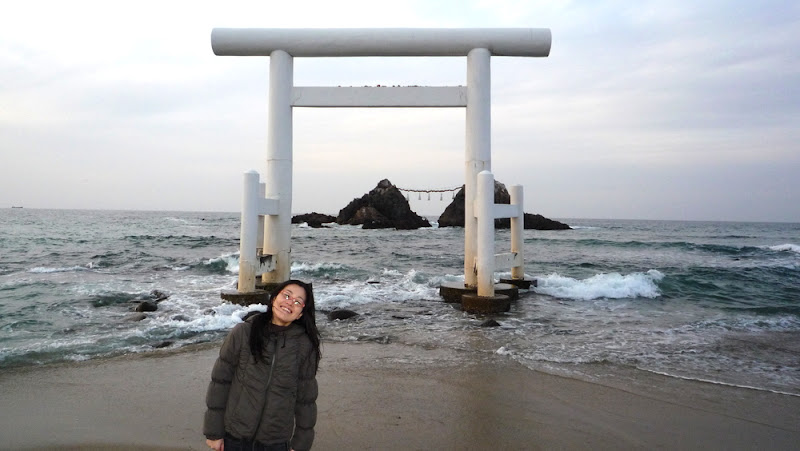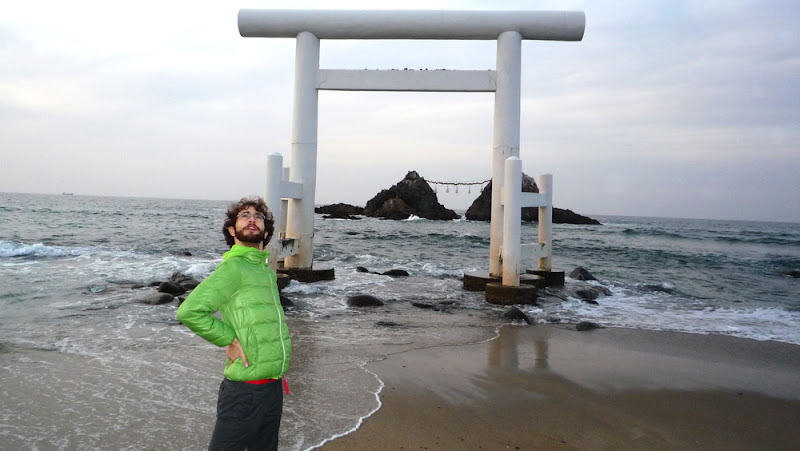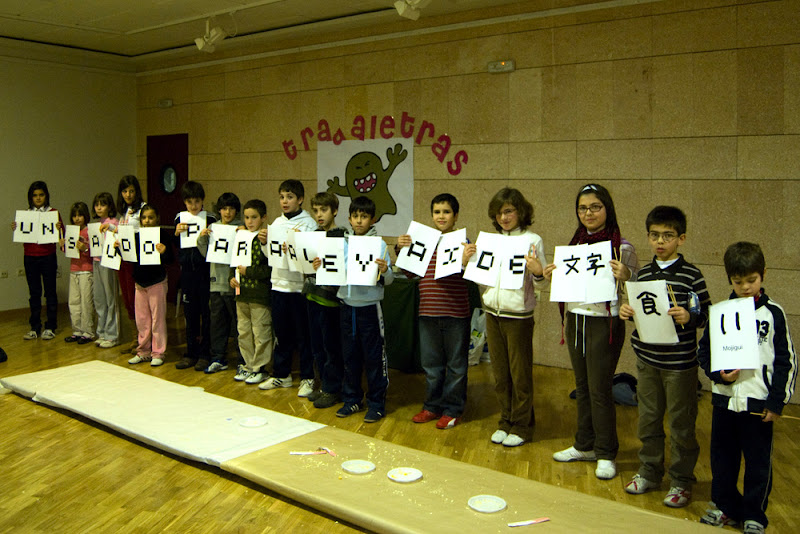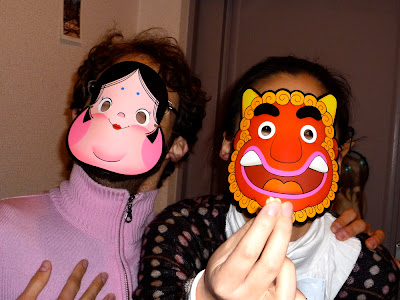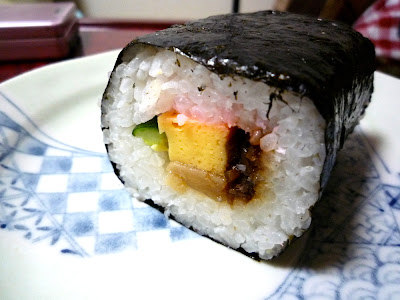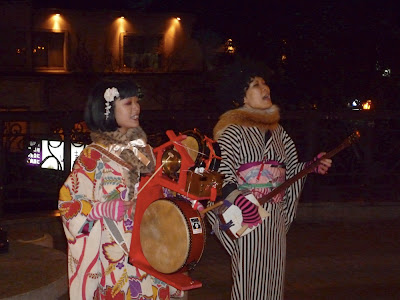
Cuando fuimos en año nuevo los padres de Ai nos dieron un montón de arroz integral. ¡Muchas gracias! Esto es bastante normal en Japón, sobre todo en los pueblos, y lo que se hace para pulirlo (convertirlo en arroz blanco normal) es ir a una máquina de seimai. Son unas cabinas que parecen cajeros automáticos pero están en medio de la nada.
お正月に帰ったとき、愛のお父さんとお母さんに玄米をいただきました。ありがとうございます!こういうのをもらうのは初めてだったけど結構普通だそうです。精米機も初めてでした。町から離れたあのATMぽい物のことです。
When we went to Ai’s parents’ for New Year they gave us a lot of brown rice. Thank you! This is quite common in Japan, and even more in rural areas. To have it polished (turned into regular white rice) you have to go to a seimai machine. They are these ATM-looking things that stand in the middle of nowhere.

Siendo la primera vez y viviendo en una gran ciudad, tuvimos que buscar un poco por internet. ¡Pero al final llegamos!
初めてで、都会ですし、場所は当然分からない。インターネットでちょっと調べたらたどり着いた。
Being our first time in a big city, we didn’t know the place. But after searching the internet for a while we were there!

El arroz integral es muy bonito y además está bueno, pero eran demasiados kilos.
玄米はそのままでも美味しいけど、多すぎた。精米しよう!
Brown rice looks and tastes good, but this was too much to handle.
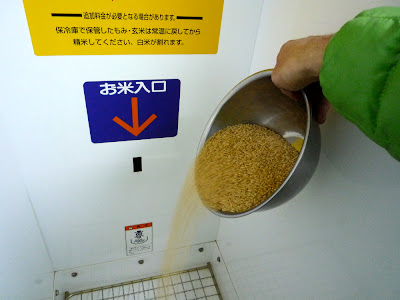
El cartel azul dice: este es el sitio donde tienes que meter el arroz.
お米を「お米入口」に入れる。
Blue sign says: this is where you put your rice.
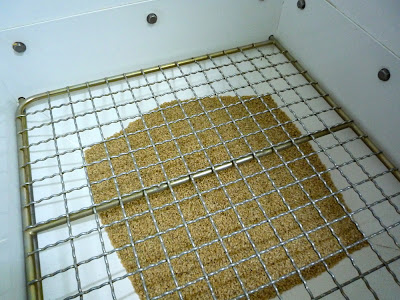
Gracia a esta reja no me desollé los dedos. ¡La seguridad ante todo! Pero este arroz no volverá a ser el mismo.
この網のおかげで指は無事に済んだ。安全第一!でもこのお米はもう元の姿に戻ることがないでしょう。
Thanks to this grid my fingers came back home with me. Safety first! But this rice won’t be the same anymore.

Una vez metidos 100 yenes hay que decir a la máquina si nuestro arroz es simplemente integral o si viene con cáscara y todo (un rollo muy profesional). Los tres botones de abajo son para elegir cómo de pulido lo quieres.
100円を入れたら、「もみ」か「玄米」を選ぶ。どれだけ精米するかも選択出来る。
You put in ¥100 and tell the machine if your rice is regular brown rice or it still has the carcass and everything (looks like really hardcore people are using this machine too). The three buttons below are for choosing how polished you want it.
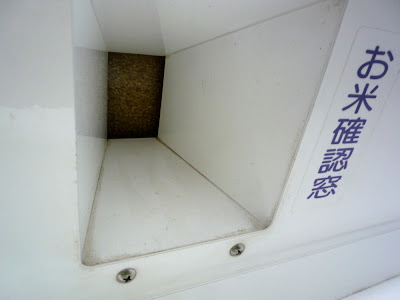
Por esta ventanita cerca del techo se puede ver pasar el arroz. Se llama «ventanita para comprobar el arroz».
せっかくだから、この「お米確認窓」でお米が通るのを確認した。
You can check how your rice passes by through this little window. It’s called the «rice checking window».
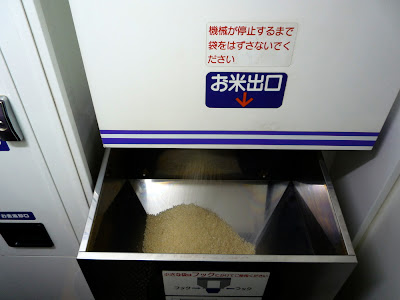
«Por aquí sale el arroz.»
やっと「お米出口」からお米が出てきた。
«Here’s where your rice will come out from.»
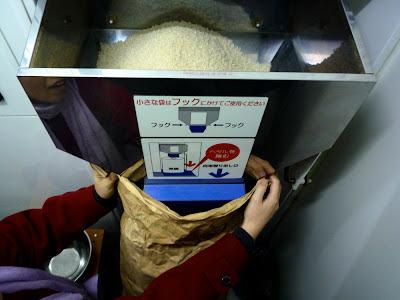
Se pone el saco debajo, se abre la compuerta con un pedal y…
袋を下に付け、てペダルを踏んで扉を開けると・・・
Attach the bag below, open the gate by pressing the pedal and…
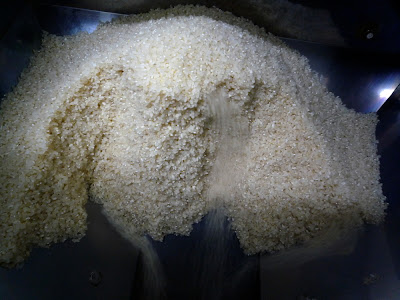
¡Todo para abajo! Bueno, a algunos hubo que empujarlos.
全部落ちてくる!最後は押さないと落て来なかったけど。
It all comes into the bag! Actually we had to push the last bits.
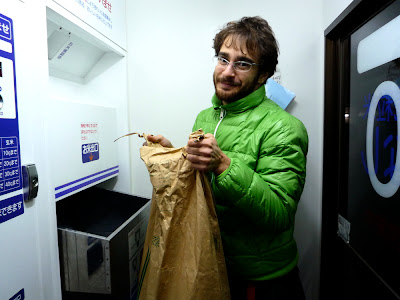
Es increíble lo rápido, cómodo y barato que es pulir el arroz integral en Japón. Probablemente la gente usa estas máquinas más de lo que me pareció a mí en un principio. Ah, y ¡el arroz está muy bueno!
精米するというのは日本でこんなに速く、安く出来るなんて便利で感心した。最初に思ったより精米機が使われてる気がした。そしてご飯が美味しい!
It’s incredibly fast, inexpensive and convenient to polish brown rice in Japan. I have come to think that people probably use these machines more often than I was thinking at first. And the rice is delicious!

